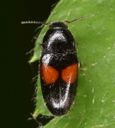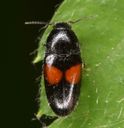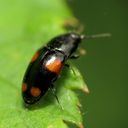Lissominae
Lissominae
Classification
- Phylum: Arthropoda
- Subphylum: Hexapoda
- Class: Insecta
- Order: Coleoptera
- Suborder: Polyphaga
- Superfamily: Elateroidea
- Family: Elateridae
- Subfamily: Lissominae
Pronunciation
How to pronounce Lissominae: //ˌlɪs.oʊˈmɪniː//
These audio files are automatically generated. While they are not always 100% accurate, they are a good starting point.
Images





Summary
Lissominae is a subfamily of click beetles within the family Elateridae, comprising approximately 11 genera and noted for their role in ecological processes such as decomposition.
Physical Characteristics
Members of Lissominae exhibit elongated bodies and are characterized by their distinctive clicking mechanism, which is used for movement and evasion from predators.
Identification Tips
Look for the characteristic elongated shape and the presence of a clicking mechanism. The surface of the beetles can have varying colors and patterns depending on the genus.
Habitat
Lissominae beetles are primarily found in forested areas, grasslands, and open habitats where they are associated with decomposing plant material.
Distribution
Distributed across various regions, though specific distributions depend on the genus.
Diet
Most Lissominae beetles are detritivores, feeding on decaying organic material, though some may also feed on other plant materials.
Life Cycle
The life cycle includes egg, larval, pupal, and adult stages, with larvae often living underground associated with decaying matter.
Reproduction
Adult beetles typically engage in solitary or grouped mating behavior. Females lay eggs in decomposing plant material to provide nourishment for the emerging larvae.
Predators
Predators include birds, larger insects, and other wildlife that forage on beetles or larvae.
Ecosystem Role
Lissominae play a crucial role in the decomposition process by breaking down organic matter, thereby contributing to nutrient cycling in their ecosystems.
Collecting Methods
- Hand collecting
- Traps
- Pitfall traps
Preservation Methods
- Drying
- Pinning
- Alcohol preservation
Evolution
The Lissominae subfamily has diversified into several genera, showing adaptations to a range of environmental conditions.
Misconceptions
Some may confuse Lissominae with other click beetles due to their clicking mechanism, but their specific morphology and habitat preferences distinguish them.
Tags
- Beetles
- Lissominae
- Elateridae
- Entomology
- Click Beetles